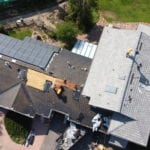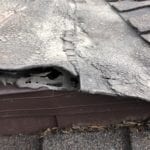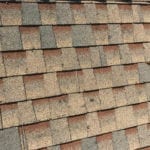
Roof replacement is an expensive but also an unavoidable expense of property owners. The moment a roof is installed, the countdown to its eventual expiration date begins. The lifespan of a roof can range from 25 to 100 years, depending on the type of roof. But there are no guarantees that a roof will last until the end of its useful life. Factors like an area’s weather and how well the property owner looks after the roof determine when the roof will eventually need replacing.
Especially, for rental properties, it is important for property owners to keep a keen eye on the condition of their roof. If the roof’s appearance is allowed to deteriorate, the property will lose its attraction for potential tenants. Moreover, a roof that is in a bad shape is liable to develop leaks and make the home unlivable for tenants. Leaks can also result in extensive damage to the major structures and systems of a home. This is why regular roof inspection is critical to maintaining the viability of a rental.
By inspecting their rental property roof on a schedule, landlords can do the following for themselves:
- Address minor issues early and prevent them from becoming major expenses
- Detect signs of imminent roof failure so that they can start planning for roof replacement
- Avoid wasting money on makeshift fixes when the roof actually needs replacing
But to correctly assess the condition of a roof and determine when it needs replacing, landlords must be able to identify the signs of roof failure. Here are the indicators that a rental property’s roof is due for changing.
1. Damaged shingles

This is not just a case of one missing or damaged shingle. When roof shingles start to curl, buckle, and crack regularly, it is a warning that the roof needs replacement. Roof shingles can curl and buckle as a result of extreme temperature changes or accumulation of moisture. Cracked shingles often result from wind damage.
In addition to cracking and curling, another sign of aging roof shingles is excessive shedding of granules. Roofs normally shed granules, but when the gutters become filled with granules, it means the roof has started to lose its effectiveness as a barrier against the elements.
2. Bowing or sagging roof
A dip in the roof is a sure sign that it needs to be replaced. Depending on how deep the depression on the roof surface, it may or may not be visible from inside the home. A sagging roof usually occurs when there is a shift in the underlying structures that support the roof. This could be the internal structures of the roof or the home’s foundations. Other times, sagging can also be caused by the excessive weight of snow.
3. Roof rot
If the wood in the interior part of the roof is exposed to moisture for

prolonged periods, it will rot. Rot encourages the growth of fungi and attracts pests that accelerate the deterioration of the wood. There are several sign landlords can look out for which reveal the presence of rotting wood in a home’s roof.
They include a sagging roof deck, evidence of water damage on the ceiling, openings in the roof (missing shingles or torn flashing), algae growth on the wood deck, and the presence of mold in the attic (particularly if the attic insulation is also soaked with water).
4. Regular roof leaks
A home’s roof can spring leaks for a variety of reasons. A leaky roof is not a sign that the roof needs to be replaced. Roof leaks happen for a range of reasons. But when leaks become a common occurrence and the roof has undergone several repairs, it may be time to change the entire roof.
The type of events that landlords should look out for in connection with a leaking roof includes water intrusion, water pooling on the roof surface, dark streaks, or stains on the underside of the roof, and dark streaks running down the interior & exteriors walls. Depending on the extent of the leak and the underlying causes, the whole roof may not require changing, but only a section of it might need simple roof leak repair.
5. Growths on the roof
Anything growing on a roof can damage it. The most common growths

found on roofs are mold, mildew, algae, and moss. Moss allows moisture to accumulate on the roof’s surface; this predisposes the roof to wood rot. Algae eat away at the shingles by metabolizing the materials they are made of.
This makes the roof brittle, porous, and susceptible to rot. Mold is one of the clearest signs a roof is suffering from water damage. Mold growing on the roof and its interior structures will cause the wood to weaken and attract pests into the roof. Mildew only grows on wet surfaces; if it is found on the roof, it means the roof is already exposed to water damage.
Finally, if there is an inexplicable spike in the home’s energy costs, then the roof may have lost its efficiency. Also if a roof is nearing the end of its useful life, it should be replaced.


